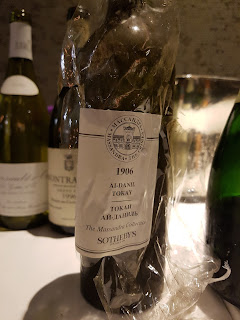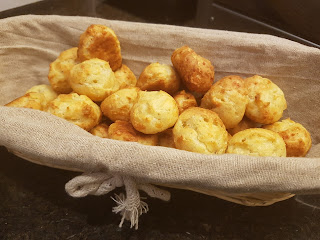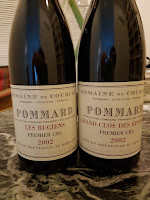We were greeted with a glass of 1996 Selosse upon arriving at at Ephernité in Taipei. Chef Vanessa had created an exceptional menu, using excellent ingredients and her unique creative sense, to pair with the superb list of wines selected by our friend for this very special dinner, to celebrate the beginning of a new chapter for their family.
Vintage 1996 was chosen for the champagnes of the evening. As we tried them in pairs, there was one clear conclusion, that 1996 was indeed a great champagne vintage, and some of the wines were still so youthful and fresh that they would endure decades of cellaring.
1996 Selosse: very delicate mousse, so gently petillant, elegantly layered with intense ripe pear, marzipan and praline notes, lingering finish. Much better appreciated as a mature white Bourgogne. 16.5/20
Flight 1:
1996 Philipponnat Clos des Goisses: About 65% Pinot Noir and 35% Chardonnay. Compared to the Dom Perignon Oenothèque which followed, this showed a bright golden hue. Intensely aromatic with apple crumble and spicy pear notes, nuanced with almond and hazelnuts. The creamy texture and rich concentration showed off a vinosity balanced by vibrant freshness that made this wine a wonderful accompaniment to Chef Vanessa’s foie gras griotte mousse, a creamy ball of foie gras mousse delicately balanced by the acidity from the cherry fruit coating. 18/20
 |
| Watermelon ginger gazpacho and foie gras griotte mousse |
1996 Dom Perignon Oenothèque: This seemed to have been trapped in a time warp. With its pale lemon colour and crystalline flavours and uncompromising minerality, this wine was full of tension and energy. Citrus peel and green apple notes, leading to a faint brioche character, and finally a saline finish. Amazingly youthful and finishing long. I would love to try this wine again in 10 years time to check its evolution. 18+/20
 |
| Salmon and caviar |
Flight 2:
1996 Cristal Rosé: a beautiful light salmon colour. Fresh pinot fruit, raspberry and cherry, with a purity of expression, brilliantly balanced texture and acidity, with a crisp and long finish. A most refined rosé champagne, with such style and elegance. A very memorable experience when paired with Chef Vanessa’s visually and gustatorially extremely delectable local cherry tomato salad, flavoured with champagne vinaigrette and topped with flounder tataki, a dish bursting with summer freshness. I would score this wine 19/20
1996 Cristal Rosé: a beautiful light salmon colour. Fresh pinot fruit, raspberry and cherry, with a purity of expression, brilliantly balanced texture and acidity, with a crisp and long finish. A most refined rosé champagne, with such style and elegance. A very memorable experience when paired with Chef Vanessa’s visually and gustatorially extremely delectable local cherry tomato salad, flavoured with champagne vinaigrette and topped with flounder tataki, a dish bursting with summer freshness. I would score this wine 19/20
 |
| Tomato salad/champagne vinaigrette/flounder tataki |
1996 Dom Perignon Rosé: a very different colour here, more orange-pink, more evolved. Savoury notes accompanied the ripe plum flavours. This seemed more loose-knit, less structured when compared with the Cristal in this rosé champagne pair. 16/20
Flight 3:
1996 Krug: I really liked the vinosity and richness of this wine. The savoury and nutty nuances, together with hazelnut shortbread and praline characters, were beautifully layered with ripe apple and pear notes. There was an elegant harmony that put this wine in a class of its wine. It could have earned a higher score, if only for the fact that it fell short of the lengthy finish and depth of flavours delivered by the Clos du Mesnil. 18.5/20
1996 Krug Clos du Mesnil: The freshness, pervasiveness of flavours, concentration were first-rate. This was a wine that delivered class and style with the opulence but balance from the 1996 vintage. A wine that appealed to the hedonistic senses. Spicy toffee apple, shortbread, toasted brioche characters with a thread of uncompromising minerality and purity that delivered an unequalled expression of Chardonnay from Champagne. 19.5/20
It’s so difficult to say which of the two wines was the better accompaniment to Chef Vanessa’s sublime creation of homard bleu served with passion-fruit flavoured beurre blanc. I might have to go for the Clos du Mesnil for the greater persistence of fruit.
 |
| Homard bleu/beurre blanc des fruits de passion |
Flight 4:
1996 Montrachet, Bouchard: The first impression was a rich full-bodied wine that delivered great persistence. Creamy textured, with intense buttery, hazelnut and ripe pear notes, the acidity was well-woven into the rich complex flavours. There was a well-defined sense of place and expression of terroir. A big wine, perhaps not the most elegant example of its class, but it would certainly benefit from more years of cellaring before re-tasting. 17.5/20
1996 Montrachet, Lafon: Smokey, toasty and spicy nuances, with ripe pear notes. This wine attested to superior craftsmanship, with an elegance that belied the richness of this wine. This bottle however seemed more evolved than the Bouchard. I detected a faint oxidative note but the trace of volatile acidity might have appealed to others and it gave the wine a welcome lift in freshness. 17/20
Perhaps it was the citrus kumquat sauce in the dish for this flight, the Lafon Montrachet seemed the better accompaniment: garoupa in bamboo thick stock, served with organic wheat, okra and kumquat sauce.
 |
| Market fish/bamboo thick stock/organic wheat okra/kumquat sauce |
1996 Meursault Les Gouttes d’Or, Leroy: One could detect the lovely materials that made this wine under the cork taint. A wine that deserves a re-trial!
To put the following two flights into context, a little history on the domaine and the vines, thanks to notes from Allen Meadows and Clive Coates. Sylvain Cathiard had been making wine independently since 1986, by renting the family vines. He eventually took over the control of the family’s vines when his father André retired in 1995. The Cathiard’s family wines had previously been labelled under Domaine Cathiard-Molinier. The farming of the particular Romanée-Saint-Vivant parcel, previously owned by André Galtié (a member of the Thomas-Moillard family) had been shared between Domaine Cathiard-Molinier and Domaine Arnoux since 1941. In 1984 Galtié decided to sell his inheritance of the Romanée-Saint-Vivant parcel, in total 68 ares (0.68 hectare), equally to Domaine Arnoux and Domaine Cathiard-Molinier, both having been sharecroppers. André Cathiard subsequently resold 17 ares back to the Thomas family. (This parcel of 17 ares was later sold to Wilf Jaeger in 2005, amongst other holdings of the Thomas-Moillard family and this Romanée-Saint-Vivant has since been leased to Domaine Dujac.) So the Cathiard holding remained as 17 ares (0.17 ha). Sylvain’s son Sébastien joined the domaine around 2005, after his various internships in Chablis, Bordeaux (Château Smith Haut Lafitte - the Cathiards in Bordeaux are distant relations) and New Zealand. The first vintage under Sébastien’s full control was 2011.
Flight 5:
1996 Romanée-Saint-Vivant, Sylvain Cathiard: This bottle showed a rather significant level of brettanomyces character and volatile acidity that made it far from enjoyable. It is worth trying another bottle at some stage. 15/20 for this bottle
1998 Romanée-Saint-Vivant, Sylvain Cathiard: There was again the brettanomyces character that made it less attractive, but not enough to detract our enjoyment of the well-delineated structure of the wine and the complexity from the savoury, mushroom notes underlying the charming cherry fruit. Still a lovely wine that showed elegance and class. 16.5/20
This flight was paired with Canard de Challans, fresh cherries and berries with porto sauce.
Flight 6:
1999 Romanée-Saint-Vivant, Sylvain Cathiard: It was hard to decide which of 1999 and 2002 we preferred, but I might slightly rate the 1999 a little above the 2002. There was just a little more delineation in the structure with the 1999 bottle, but the pure expression of fruit was very classy and testified to the hallmark of the winemaker.18.5/20
2001 Romanée-Saint-Vivant, Sylvain Cathiard: There was a hint of band-aid brettanomyces character in the beginning but it somehow managed to submerge into the pinot fruit, sauvage and sous-bois characters that dominated the nose after some aeration. A lithe and stylish wine. 17.5/20
2002 Romanée-Saint-Vivant, Sylvain Cathiard: Purity of pinot expression, smoothly textured, with well-defined ripe tannins, and a persistent finish. Very stylish and very moreish. 18/20
This flight was paired with Wagyu beef cheek stew, mashed potato and farm veggies, as well as a portion of home-made tagliatelle with girolles, which was a highlight worth saving room for!
 |
| Home-made tagliatelle/girolles |
 |
| Wagyu beef cheek/mash potato/farm veggies |
The final wine was paired with the cheese selection.
I had never tasted a Massandra before and this 1906 Al-Danil Tokay from the Massandra Collection (the oldest winery in the Crimea) was a very fine example of a perfectly matured lively dessert wine, with notes of dried figs, spicy fruit cake, caramel and balsamic, full-bodied, rich and concentrated, still brimming with vibrancy and energy. Such a rare treat!
Thank you very much to our generous hosts and friends, Iris and Joe, for all the memorable dinners we’ve had over the years. This dinner marked the beginning of your new journey and we look forward to sharing other memorable experiences with you soon, wherever they may be around the world!
And a note to Chef Vanessa and Restaurant Manager Claude - congratulations on your upcoming wedding!












































